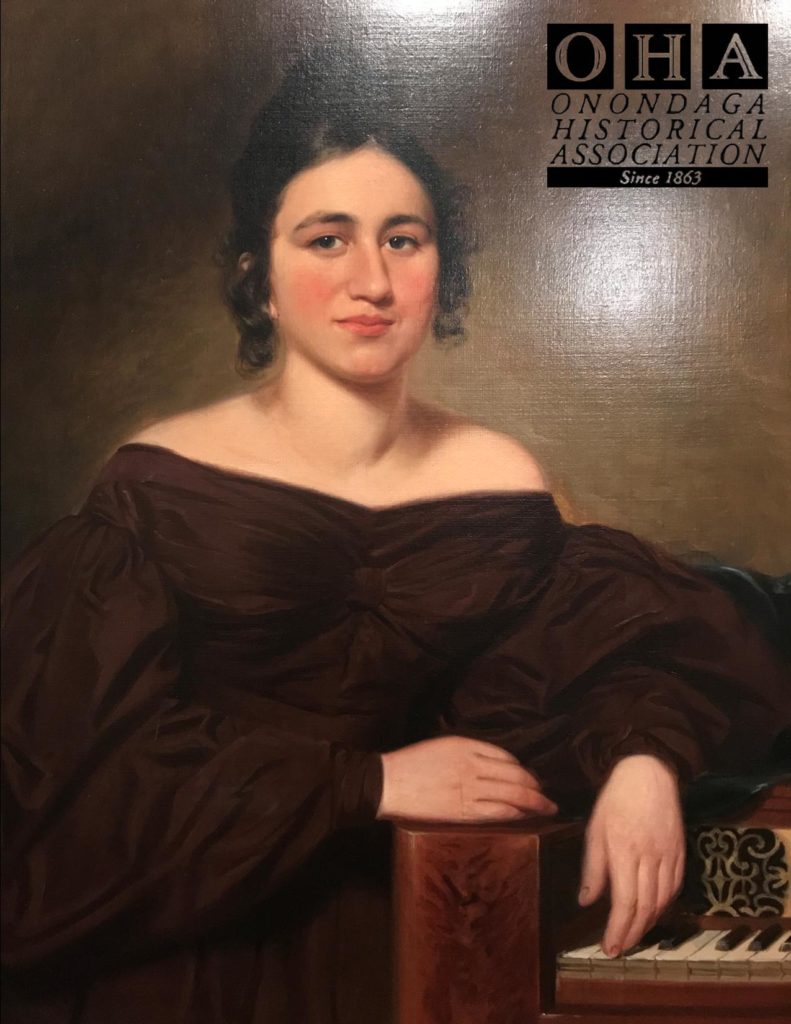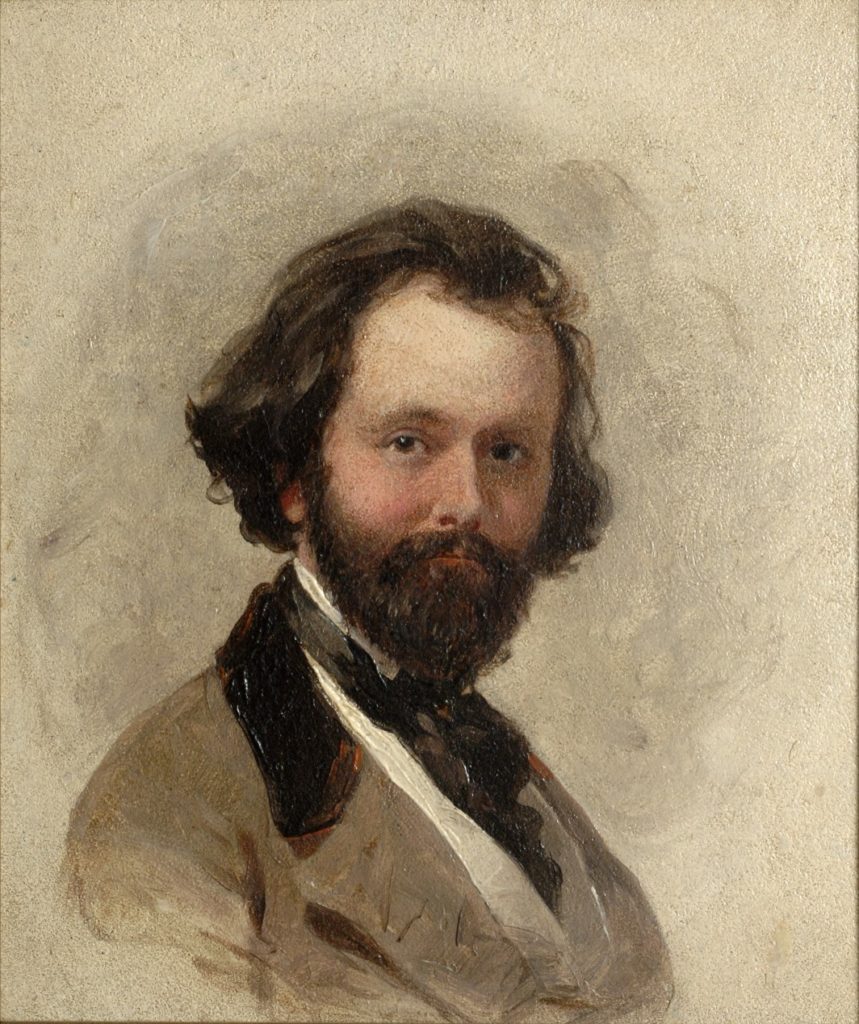
Maria Porter, whose portrait (above, age 26) was painted by Charles Loring Elliot, was born on January 30th, 1810. She would go on to marry George Geddes, an engineer and surveyor who was born in Fairmount, NY and attended Onondaga Academy. His father, James, was a chief engineer on the Erie Canal and, with his influence, the canal route ran through the salt works at Onondaga. Following in his father’s footsteps, George distinguished himself by consulting on the construction of the Syracuse and Oswego Railroad. Also like his father, George was a member of the New York State Senate from 1848 through 1851.
Who was Charles Loring Elliott ?
Via the Everson Museum of Art: Charles Loring Elliott (1812-1868) was a prolific portrait painter from Central New York. Born in Scipio, NY, Elliott spent most of his childhood in Syracuse, where his father was an architect and building contractor. Elliott devoted his childhood leisure to sketching and experimenting with oil paint, while occasionally making architectural drawings for his father. Shortly after his high school graduation, Elliott traveled to New York to study painting with John Trumbull, popular painter and president of the New York Academy of Fine Arts. Elliott did not enjoy Trumbull’s teaching style, and so he sought out John Quidor, a figure painter residing in New York, who proceeded to give Elliott the only formal training of his career.

Charles Loring Elliott, Self Portrait, 1834, oil on canvas, 14½ x 13 inches, Everson Museum of Art; Museum purchase with funds from the Friends of the American Art Fund, 11.95.1
After less than two years in the city, Elliott returned home to Central New York in 1834. He spent the next decade working as an itinerant portrait painter, likely supplementing his income by also decorating coaches, sleighs, and tavern signs. In the 1840s, he began to gain recognition as a talented portraitist, with notable Syracuse, Rochester, and Auburn residents commissioning him to capture their likenesses. By 1845, Elliott returned to New York City and quickly established himself as one of the leading portrait painters in the country. His style depended on a meticulous observation of his models, which allowed him to capture their individual characteristics with constant accuracy and naturalism. The colorful freshness and pleasing clarity of his work surpassed any competitors of his time.
RELATED: See the Maria Porter portrait and other amazing paintings from the OHA Collection by visiting our new exhibit, From Gilded to Gustav: The Victorian and Arts & Crafts Eras in Onondaga County.
Elliott’s first major success was a portrait of fellow artist and friend Sanford Thayer, painted in 1845. His treatment of Thayer’s golden beard, which English critics wrote, “seemed to possess the splendor of the setting sun,” showed Elliott’s unrivaled ability as a painter. The portrait helped gain Elliott acceptance into the National Academy of Design, and led to a stream of other portrait commissions. Ultimately, Elliott produced over 700 portraits in his career. He painted countless members of the Hamilton College faculty, many prominent residents of Central New York, an innumerable amount of government officials and Washington businessmen, five New York State Governors, and numerous members of the Vanderbilt family. In the 1860s, Elliott received so many commissions from people living in Albany that he ultimately moved there for the remainder of his life. –
– Michael Brussel, Curatorial Intern and Steffi Chappell, Curatorial Assistant at the Everson Museum of Art | Syracuse, NY

